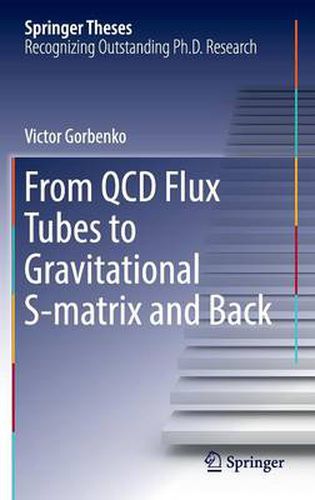Readings Newsletter
Become a Readings Member to make your shopping experience even easier.
Sign in or sign up for free!
You’re not far away from qualifying for FREE standard shipping within Australia
You’ve qualified for FREE standard shipping within Australia
The cart is loading…






This title is printed to order. This book may have been self-published. If so, we cannot guarantee the quality of the content. In the main most books will have gone through the editing process however some may not. We therefore suggest that you be aware of this before ordering this book. If in doubt check either the author or publisher’s details as we are unable to accept any returns unless they are faulty. Please contact us if you have any questions.
This thesis studies various aspects of non-critical strings both as an example of a non-trivial and solvable model of quantum gravity and as a consistent approximation to the confining flux tube in quantum chromodynamics (QCD). It proposes and develops a new technique for calculating the finite volume spectrum of confining flux tubes. This technique is based on approximate integrability and it played a game-changing role in the study of confining strings. Previously, a theoretical interpretation of available high quality lattice data was impossible, because the conventional perturbative expansion for calculating the string spectra was badly asymptotically diverging in the regime accessible on the lattice. With the new approach, energy levels can be calculated for much shorter flux tubes than was previously possible, allowing for a quantitative comparison with existing lattice data. The improved theoretical control makes it manifest that existing lattice data provides strong evidence for a new pseudoscalar particle localized on the QCD fluxtube - the worldsheet axion. The new technique paves a novel and promising path towards understanding the dynamics of quark confinement.
$9.00 standard shipping within Australia
FREE standard shipping within Australia for orders over $100.00
Express & International shipping calculated at checkout
Stock availability can be subject to change without notice. We recommend calling the shop or contacting our online team to check availability of low stock items. Please see our Shopping Online page for more details.
This title is printed to order. This book may have been self-published. If so, we cannot guarantee the quality of the content. In the main most books will have gone through the editing process however some may not. We therefore suggest that you be aware of this before ordering this book. If in doubt check either the author or publisher’s details as we are unable to accept any returns unless they are faulty. Please contact us if you have any questions.
This thesis studies various aspects of non-critical strings both as an example of a non-trivial and solvable model of quantum gravity and as a consistent approximation to the confining flux tube in quantum chromodynamics (QCD). It proposes and develops a new technique for calculating the finite volume spectrum of confining flux tubes. This technique is based on approximate integrability and it played a game-changing role in the study of confining strings. Previously, a theoretical interpretation of available high quality lattice data was impossible, because the conventional perturbative expansion for calculating the string spectra was badly asymptotically diverging in the regime accessible on the lattice. With the new approach, energy levels can be calculated for much shorter flux tubes than was previously possible, allowing for a quantitative comparison with existing lattice data. The improved theoretical control makes it manifest that existing lattice data provides strong evidence for a new pseudoscalar particle localized on the QCD fluxtube - the worldsheet axion. The new technique paves a novel and promising path towards understanding the dynamics of quark confinement.